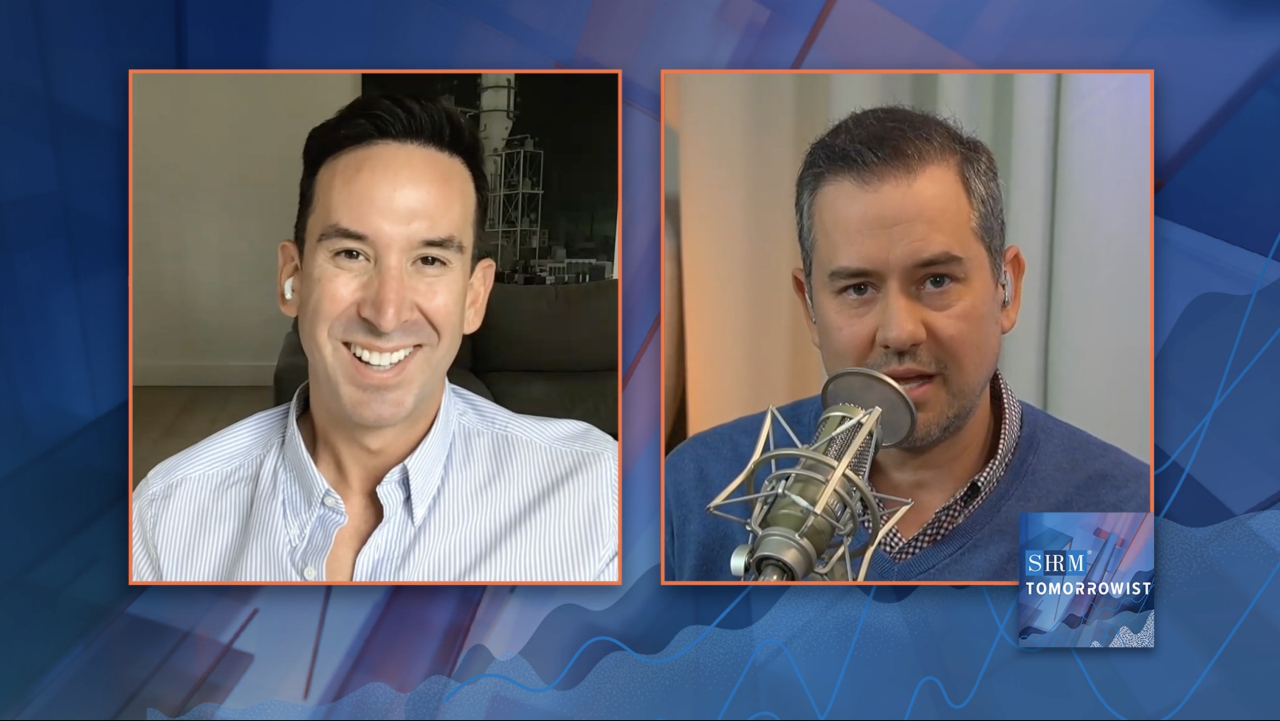A vibrant work culture is a key driver of both business success and employee retention. But how does this translate to remote-first organizations? With social isolation emerging as a growing concern and the advantages of in-person collaboration becoming clearer, the challenges faced by remote teams are significant. Scott Domann, chief people officer at Agrovision, an agribusiness company, recently joined Tomorrowist to share valuable insights on building a thriving culture in the remote era.
Domann—who’s held executive positions focused on building culture with Calm, Netflix, and Spotify—explained how he navigated the challenges of remote-first organizations, strengthened mental health, and found a balance between employee flexibility and productivity.
The Shift to Remote-First: Lessons from Calm
Recounting his experience at Calm, Domann shared how the company transitioned to a remote-first model early in the pandemic. For Calm, the goal was to prioritize stability and connection for employees. “We wanted to make sure that we really got through the mission, vision, and values of Calm through those initial interactions focused on as a remote-first company onboarding,” said Domann. “We didn’t want [onboarding] to be a transactional experience.”
This involved enhancing onboarding, investing in people managers, and emphasizing active listening. In a remote-first environment, active listening is critical—but often difficult. By empowering managers with skills to engage, Calm cultivated a sense of belonging for its employees and mitigated the isolation that can be common with remote setups.
Tackling Isolation and Mental Health
Combating loneliness and social isolation is often a major challenge for remote teams. Calm addressed this challenge by fostering a culture of support, encouraging employees to acknowledge feelings of loneliness, and offering creative virtual team-building events, such as murder mysteries and bingo.
“We really looked at ways that we could infuse connection and fun and learning into the way we operated,” said Domann. “We really dialed up on town hall and all-hands [meetings], not just in frequency, but made sure they had purpose and agendas and topics associated so that a lot of people got the opportunity to present.” Domann’s team ensured everyone had the opportunity to learn and participate in engaging Zoom calls, rather than just being talked at.
Domann explained that even as a remote-first organization, Calm understood the value of real-life connection. “We’re conscious about team in-person meetings. So we created budgets for people to travel and get together and then an annual all-hands with the whole company got together.”
The Balance of Empathy Without Overextension
Domann noted that managers should be vigilant but respect employees’ boundaries when managing mental health support at work. “You don’t want people to over-rotate and be an armchair psychologist,” he cautioned. “Point them towards the benefits page, know that there are resources available to them. And then on the other side of it is, don’t try and solve many of these things yourself.”
At times, managers with the best intentions can unintentionally cause harm or convey the wrong message. Instead, Domann said they should guide employees toward professional resources and ensure they get the help they need. This approach ensures empathy without compromising workplace objectives.
Vulnerability in Leadership — Can It Go Too Far?
While vulnerability can be an asset and build stronger teams, oversharing in the workplace can be a concern. Domann believes that while vulnerability can build trust, not all leaders are comfortable or skilled in sharing personal experiences.
“For those of you that are senior leaders or advising senior leaders, I say this with love. As much as we all love the Brene Brown versions of vulnerability and things like that, not everyone can do it, and it’s not appropriate for every scenario,” said Domann. He explained that respect should come before all else: “Go from a foundation of respect and think about receiving and then supporting people along that journey.” Domann’s message also goes both ways by advocating for respect for the employee and respect for yourself.
Remote Workers’ Mental State Impacts Business Outcomes
For those who may view remote-worker outreach or mental health discussions as distractions, Domann offers a pragmatic perspective: “If you’re investing in mental health resources, those mental health resources ideally will reduce the absenteeism and reduce turnover, reducing your overall cost and expense, which then does speak to your bottom line.”
Domann shared how programs such as Calm’s workplace packages and financial literacy initiatives provided measurable returns by improving employee well-being and productivity, even if people weren’t in the office. If remote workers are stable and healthy, they’ll be better employees overall.
Domann also challenged leaders to build trust and foster effective communication. “Do we have a foundation of trusting each other, and how do we build that trust?” he asked. “What do we communicate? And what [do] those boundaries look like in terms of what are healthy debates and communications?”




